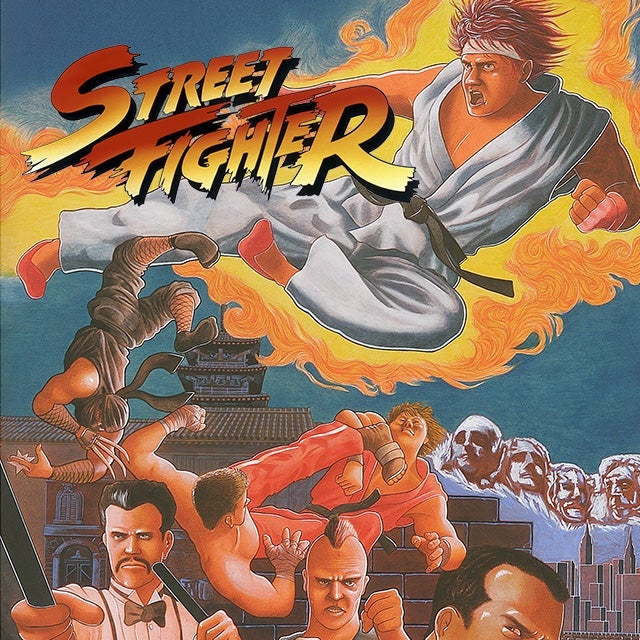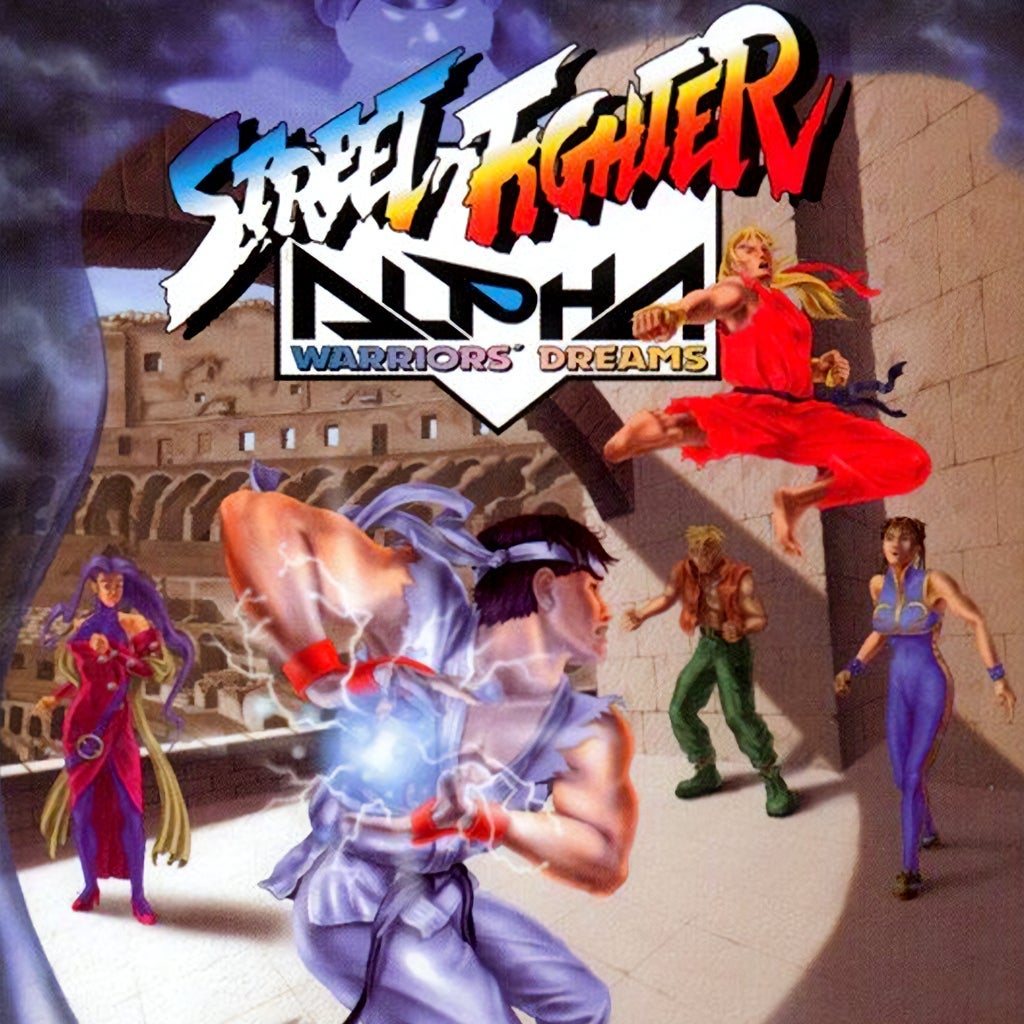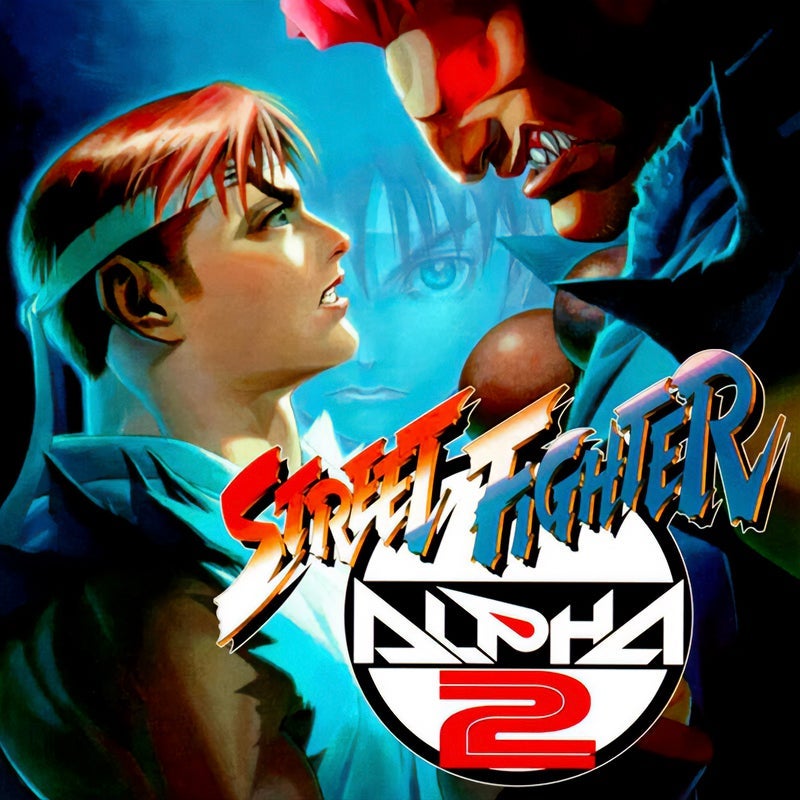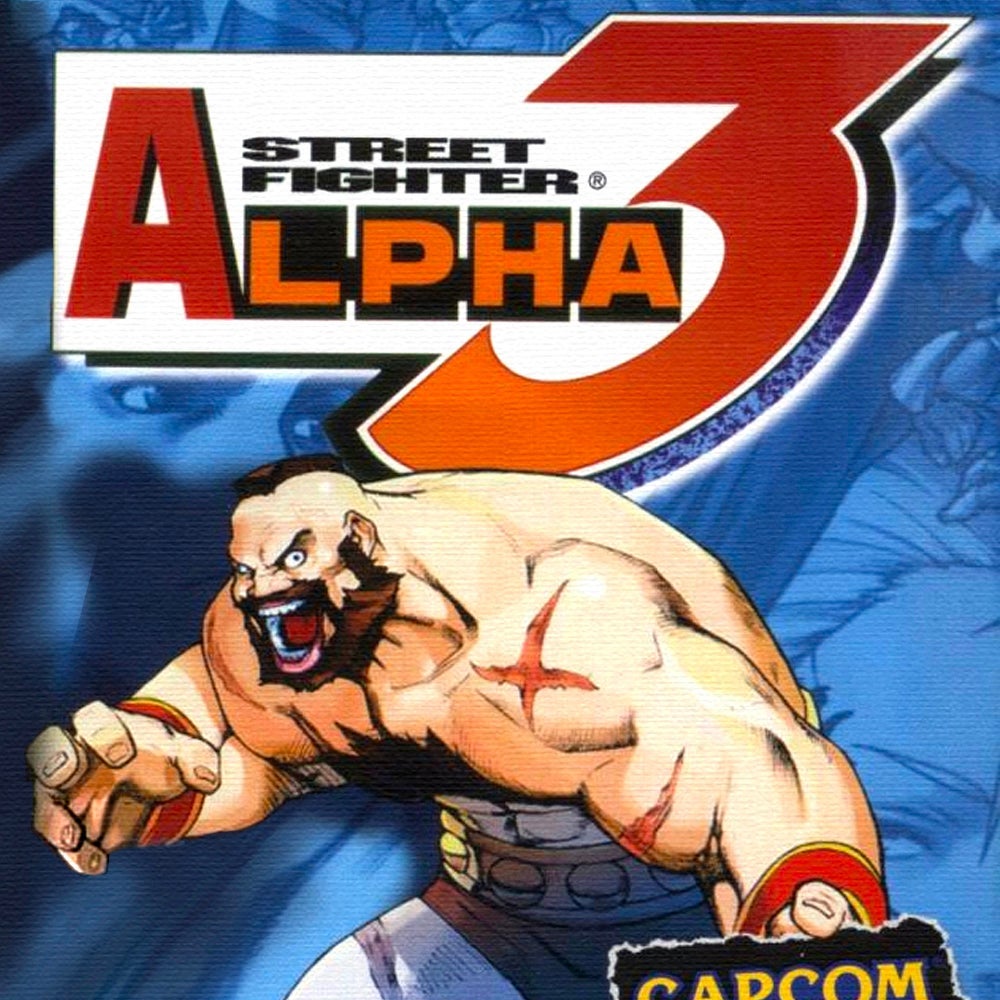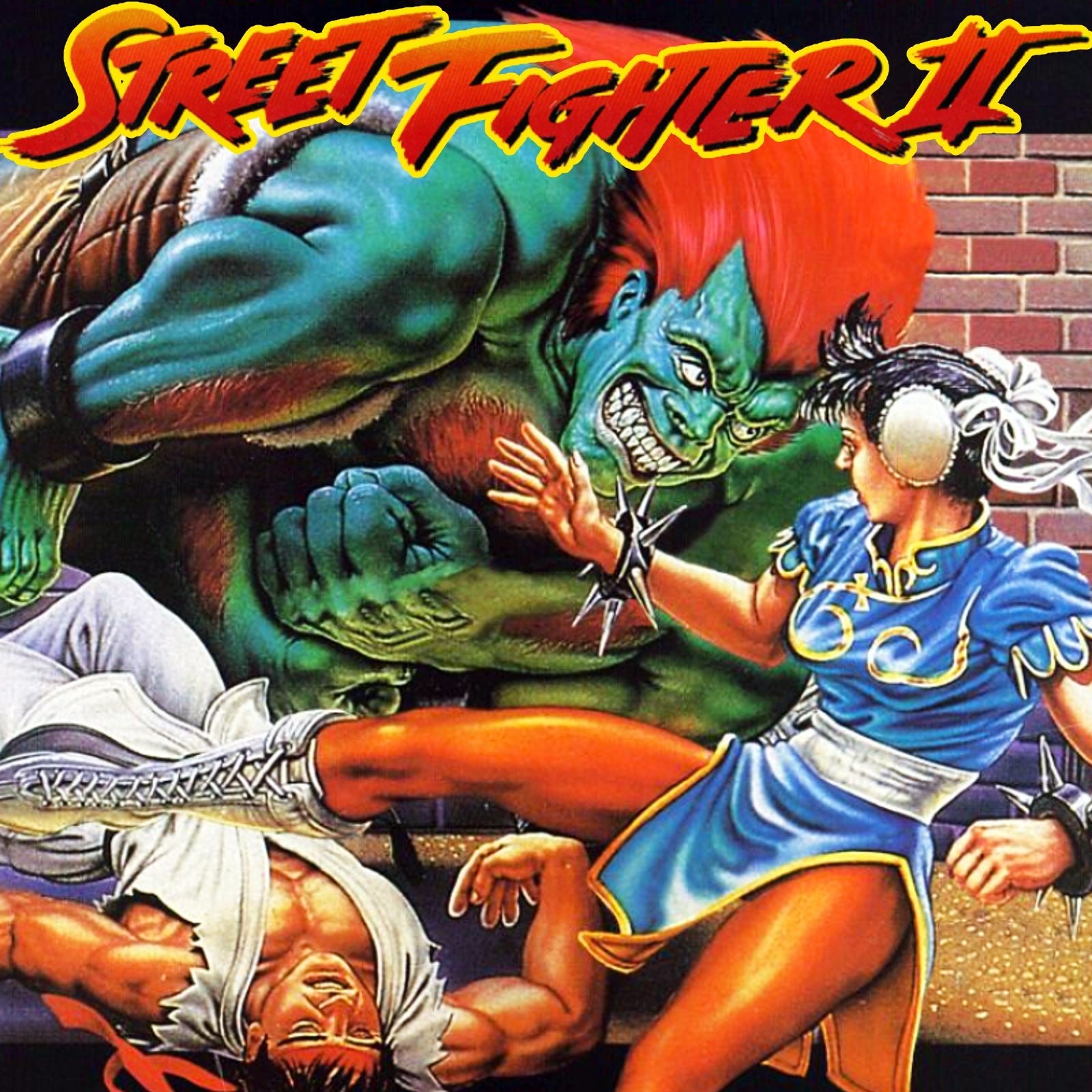It might not have created the genre, but fighting games wouldn’t be as important and popular as they are today without Street Fighter. This is a series that introduced the idea of combos, a six-button layout, and motion inputs for special moves. It also helped build a competitive scene for fighting games, it made the arcade scene rise in the 90s, and it revitalized the genre in the era of online play.
With each main entry, Street Fighter tried to create something new or focus in a new direction that would make other iconic fighting game franchises, such as Mortal Kombat or The King of Fighters, pay attention. However, the series surpassed its walls and became a cultural phenomenon, with its well-known roster appearing in different types of media and even games outside of the fights, like Fortnite.
In this article, you’ll find a chronology of the series if you’re interested in playing each entry from the start and following its intricate story.
Jump to:
Since the original Street Fighter was released in 1987, Capcom has launched five main entries in the series, with their respective sequels and special versions and rereleases on multiple platforms and arcade systems. Most of the time, each version came with new characters, modes, balances in the whole roster, and other unique features.
While the original Street Fighter only has two versions (the original arcade one and the one ported to consoles), Street Fighter II spawned seven different versions since its debut in 1991, the most recent one being the Switch-exclusive Ultra Street Fighter II: The Final Challengers (2017). The following main entry has three releases: Street Fighter III: New Generation, 2nd Impact, and Third Strike. 2008’s Street Fighter IV has appeared in the market three more times with Super Street Fighter IV, Super Street Fighter IV: Arcade Edition, and Ultra Street Fighter IV. Lastly, Street Fighter V also received a couple of big updates after its initial launch in 2016: Street Fighter V: Arcade Edition and Street Fighter V: Champion Edition.
Apart from the main series, the Alpha subseries was pretty popular in its time. Three games were released under this title: Street Fighter Alpha: Warriors Dream, Street Fighter Alpha 2, and Street Fighter Alpha 3. A second subseries, called Street Fighter EX, was co-developed by Capcom and Arika. It features another trilogy of games, for the first time in 3D.
If we include the crossovers, spin-offs, and characters’ special appearances in other series, the list keeps getting bigger. There’s the film tie-in called Street Fighter: The Movie, the puzzle game Super Puzzle Fighter II Turbo, its fighting game spin-off Super Gem Fighter Mini Mix (also called Pocket Fighters), and the most recent mobile entry, Street Fighter: Duel, available on Android.
The Vs. series has seen numerous entries in its history. From the well-received X-Men Vs. Street Fighter in 1997 to the inclusion of multiple characters of the franchise in every of the “Vs. Capcom” series, with Marvel Vs. Capcom being the most popular one. Ryu and the World Warriors also faced Tekken’s characters in Street Fighter X Tekken, and there’s an interesting platformer spin-off that was originally fanmade, called Street Fighter X Mega Man.
Before going in with the list of main titles, it’s worth mentioning that the timeline of the canon Street Fighter titles is not very consistent. There are incoherences in some individual character stories between entries, restarting plots or characters being death and then alive, among other things. However, the following is the most accepted timeline in the series.
Beware of spoilers for the stories, characters, and relevant events of each game in the list below.
The game that started it all, Street Fighter doesn’t go deep in terms of presenting a story. You can only play as the iconic characters Ryu and Ken, looking to battle fighters in five different countries: Japan, England, the United States, China, and Thailand. The latter is where the final challengers are, Adon and Sagat.
Sagat, a master of Muay Thai, fights Ryu to see who’s the best fighter in the world in a tournament. Our protagonist Ryu wins the battle, leaving Sagat with a prominent scar on his chest, furious, and searching for revenge in the future.
Available on: PS4, Xbox One, Nintendo Switch, PC (Street Fighter 30th Anniversary Collection) | IGN’s Fighting Street Review
In the first entry in the Alpha subseries, Warrior’s Dreams, Sagat is back and ready to take revenge on the man who defeated him. However, Alpha presents many more relevant characters than the original Street Fighter, including the iconic antagonist M. Bison.
M. Bison is creating an evil organization, Shadaloo, while other characters from different backgrounds, such as Chun-Li, Charlie (Guile’s mate), and Rose try to stop him. Adon, Sagat’s former apprentice, is looking to beat his master, and the new character Dan Hibiki also wants a piece, since Sagat killed his father. Meanwhile, Ryu is looking for Akuma, a devilish warrior that murdered Gouken, Ryu’s and Ken’s mentor.
Available on: PS4, Xbox One, Nintendo Switch, PC (Street Fighter 30th Anniversary Collection) | IGN’s Street Fighter Alpha Review
Alpha 2 is mostly a reimagination of the previous one. Akuma and M. Bison continue to be the antagonist, fighting Ryu until death and establishing the criminal syndicate Shadaloo, respectively. These stories are more fleshed-out though, as Ryu’s encounter against Akuma involves a battle on Akuma’s island, which is destroyed by its owner by the power of a single fist. On his side, M. Bison keeps recruiting people for his organization, with the aim of obtaining Ryu’s body.
New characters like Dhalsim, Zangief, and Sakura get introduced. Raised in India, Dhalsim becomes the Yoga Master, a being capable of stretching his limbs in absurd ways, while raising money for his poor village. The Red Cyclone Zangief is a well-known figure in his land, Russia, thanks to his endeavors in showing the power of his country. Sakura is Ryu’s number one fan, and she drops out of school to start a journey and meet her idol.
Available on: PS4, Xbox One, Nintendo Switch, PC (Street Fighter 30th Anniversary Collection) | IGN’s Street Fighter Alpha 2 Review
Some of the storylines presented in this subseries end in Street Fighter Alpha 3. M. Bison gains control of Ryu, who is in another state of mind with the evil force Satsui no Hado, while he also has the Psycho Drive, a machine capable of erasing complete towns.
Sagat confronts Ryu one more time, Guile, Chun-Li, and Charlie want to finish M. Bison, and other characters like Dan Hibiki gets their time to shine.
Available on: PS4, Xbox One, Nintendo Switch, PC (Street Fighter 30th Anniversary Collection) | IGN’s Street Fighter Alpha 3 Review
Arguably the most popular game in the series, Street Fighter II: The World Warrior (and its multiple versions) revolve around the same setting: M. Bison is back, and he is hosting a world tournament that welcomes the best fighters from different parts of the globe.
His plan is still the same: to raise Shadaloo and recruit the best fighters for his side. While every character has a different reason to participate in the tournament and take out M. Bison, Akuma is the one that actually confronts this evil force.
Available on: PS4, Xbox One, Nintendo Switch, PC (Street Fighter 30th Anniversary Collection) | IGN’s Street Fighter II: The World Warrior Review
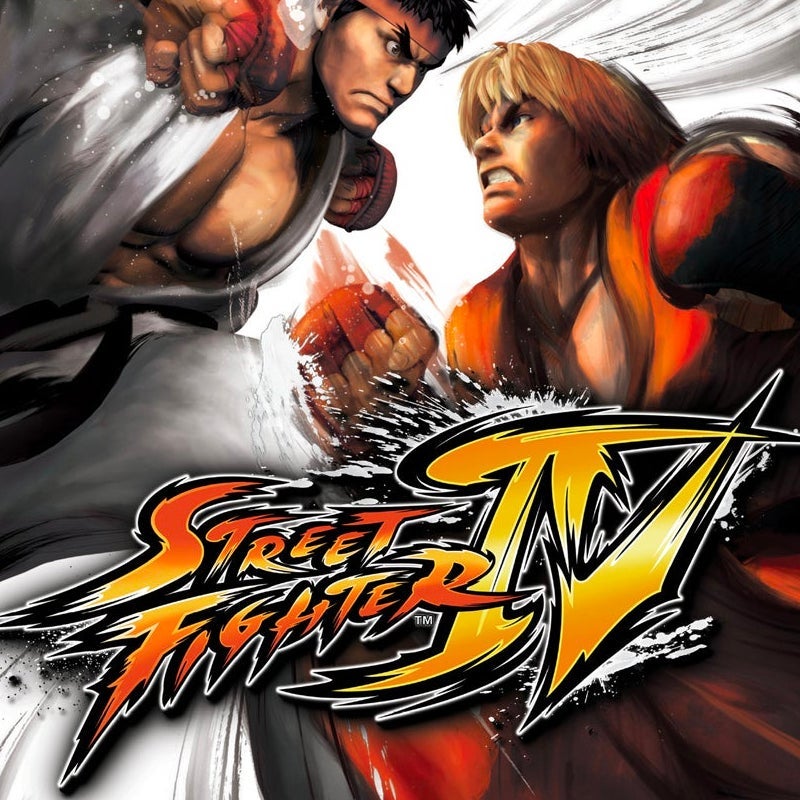
It turns out that M. Bison is still alive after his death battle with Akuma. However, he is not the main antagonist in Street Fighter IV. Instead, that’s the role of Seth, one of the many beings created by M. Bison, and also an important part of Shadaloo.
Seth wants to become the ultimate warrior and to do so, he hosts a new world tournament for only the strongest beings. He wants to copy their power, as this is one of his special abilities.
Outside of the tournament, it is discovered that Gouken, Ken’s and Ryu’s master, is alive, and he’s ready for a final fight with Akuma.
Available on: PS3, Xbox 360, PS4, Xbox One (Ultra Street Fighter IV), PC | IGN’s Street Fighter IV Review | Super Street Fighter IV Review | Ultra Street Fighter IV Review
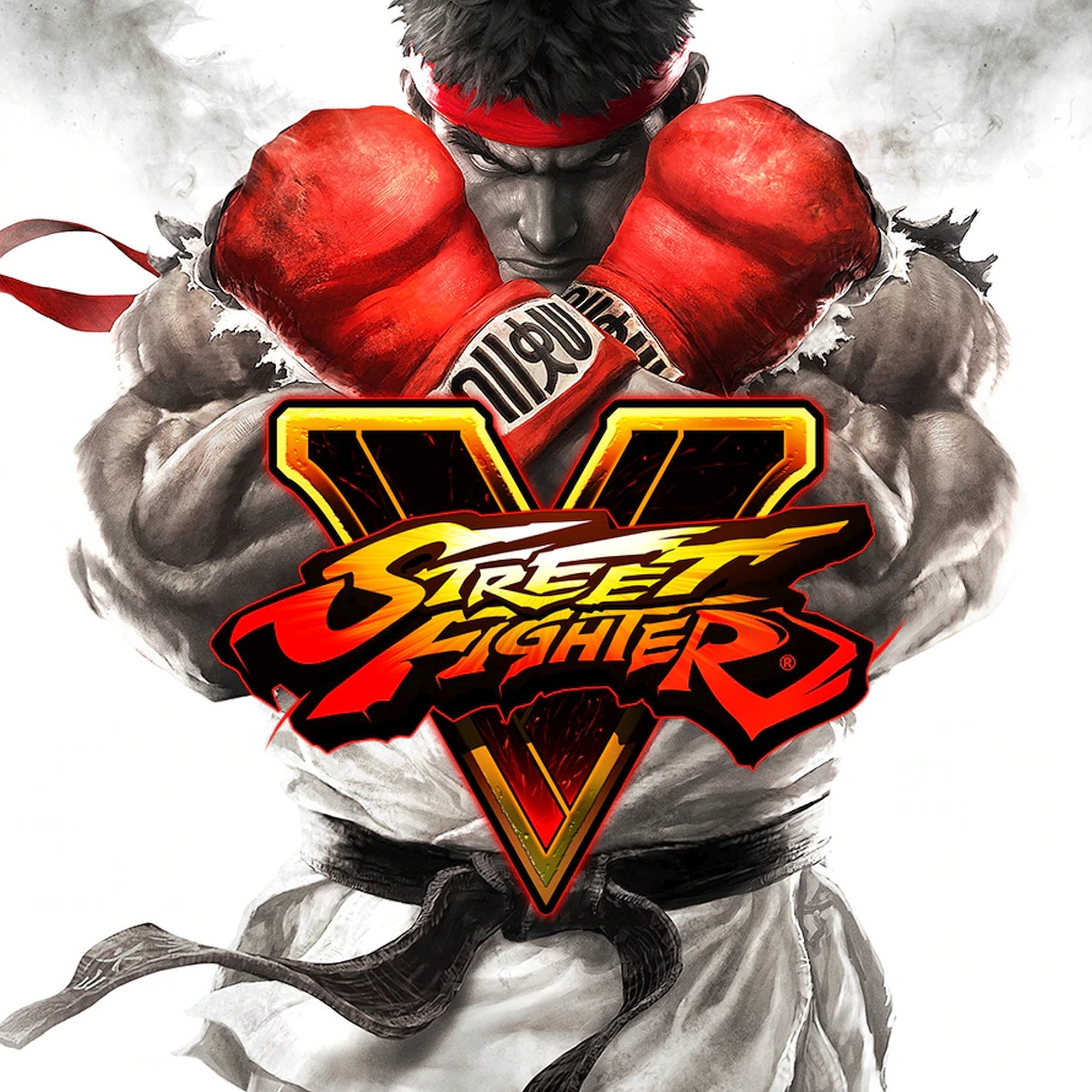
In Street Fighter V, Shadaloo is far from over. The criminal organization is about to proceed with a plan called Operation C.H.A.I.N.S, which consists of seven artificial satellites (Black Moons) that are capable of launching an EMP on Earth. This time, the newly introduced F.A.N.G is one of the main minds behind Shadaloo, alongside the returning M. Bison.
Different teams of returning characters from the series as Karin (Alpha 3), Birdie (SF II), Rainbow Mika (Alpha 3), and others create an alliance to stop Shadaloo one more time. New fighters like Rashid are also allies, and Charlie returns from the dead.
Meanwhile, Necalli is a mythic figure that feeds on the soul of fighters, and he encounters Ryu on his way.
Available on: PS4, PC | IGN’s Street Fighter V | Street Fighter V: Arcade Edition Review
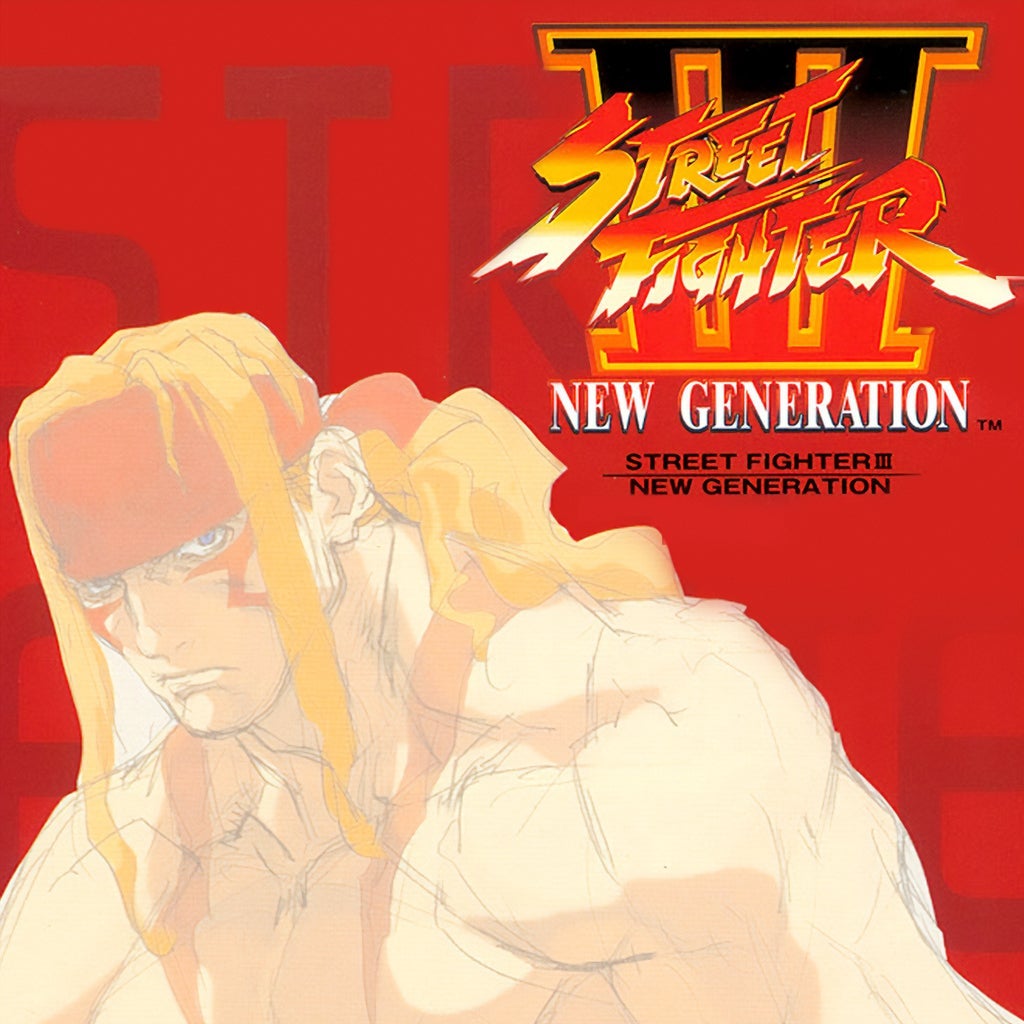
Street Fighter III: New Generation and its two sequels are a fresh start in the series. The seemingly unstoppable Shadaloo is done for good, but this doesn’t mean there isn’t a new organization ready to take its place. The Illuminati, led by the new antagonist Gill, also has plans for the whole world.
How does Gill plan to achieve his goals? You guessed it: by hosting a new world tournament and looking out for the best warriors from different backgrounds. With much of the main roster gone, the SF III series features Alex as its main protagonist and lots of fresh faces, such as Ibuki, Yun, Yang, Oro, Dudley, Sean, and Elena. Of the legendary characters, only Ryu and Ken make their return in New Generation.
Available on: PS4, Xbox One, Nintendo Switch, PC (Street Fighter 30th Anniversary Collection) | IGN’s Street Fighter III: Third Strike Review
The series is more alive now than ever with the upcoming launch of Street Fighter 6 on June 2, 2023. The sixth main entry in the franchise takes place after the events of the Street Fighter III series, meaning it will be the most recent entry in terms of the timeline. After the game launches, it’s expected to be supported for years to come, with the first season pass, Year 1 Character Pass, already announced.
Apart from video games, Legendary Entertainment has already announced a live-action film is in the work, co-produced with Capcom. A TV series might also be a possibility since the studio acquired the TV rights to the series, too.
Also see the Street Fighter merch including awesome pixel frame art you can buy from IGN Store:
Axel Bosso is a contributing freelancer for IGN covering everything related to video games.
Continue reading...
With each main entry, Street Fighter tried to create something new or focus in a new direction that would make other iconic fighting game franchises, such as Mortal Kombat or The King of Fighters, pay attention. However, the series surpassed its walls and became a cultural phenomenon, with its well-known roster appearing in different types of media and even games outside of the fights, like Fortnite.
In this article, you’ll find a chronology of the series if you’re interested in playing each entry from the start and following its intricate story.
Jump to:
How Many Street Fighter Games Are There?
Since the original Street Fighter was released in 1987, Capcom has launched five main entries in the series, with their respective sequels and special versions and rereleases on multiple platforms and arcade systems. Most of the time, each version came with new characters, modes, balances in the whole roster, and other unique features.
While the original Street Fighter only has two versions (the original arcade one and the one ported to consoles), Street Fighter II spawned seven different versions since its debut in 1991, the most recent one being the Switch-exclusive Ultra Street Fighter II: The Final Challengers (2017). The following main entry has three releases: Street Fighter III: New Generation, 2nd Impact, and Third Strike. 2008’s Street Fighter IV has appeared in the market three more times with Super Street Fighter IV, Super Street Fighter IV: Arcade Edition, and Ultra Street Fighter IV. Lastly, Street Fighter V also received a couple of big updates after its initial launch in 2016: Street Fighter V: Arcade Edition and Street Fighter V: Champion Edition.
Apart from the main series, the Alpha subseries was pretty popular in its time. Three games were released under this title: Street Fighter Alpha: Warriors Dream, Street Fighter Alpha 2, and Street Fighter Alpha 3. A second subseries, called Street Fighter EX, was co-developed by Capcom and Arika. It features another trilogy of games, for the first time in 3D.
If we include the crossovers, spin-offs, and characters’ special appearances in other series, the list keeps getting bigger. There’s the film tie-in called Street Fighter: The Movie, the puzzle game Super Puzzle Fighter II Turbo, its fighting game spin-off Super Gem Fighter Mini Mix (also called Pocket Fighters), and the most recent mobile entry, Street Fighter: Duel, available on Android.
The Vs. series has seen numerous entries in its history. From the well-received X-Men Vs. Street Fighter in 1997 to the inclusion of multiple characters of the franchise in every of the “Vs. Capcom” series, with Marvel Vs. Capcom being the most popular one. Ryu and the World Warriors also faced Tekken’s characters in Street Fighter X Tekken, and there’s an interesting platformer spin-off that was originally fanmade, called Street Fighter X Mega Man.
Before going in with the list of main titles, it’s worth mentioning that the timeline of the canon Street Fighter titles is not very consistent. There are incoherences in some individual character stories between entries, restarting plots or characters being death and then alive, among other things. However, the following is the most accepted timeline in the series.
Street Fighter Games in Chronological Order
Beware of spoilers for the stories, characters, and relevant events of each game in the list below.
1. Street Fighter (1987)
The game that started it all, Street Fighter doesn’t go deep in terms of presenting a story. You can only play as the iconic characters Ryu and Ken, looking to battle fighters in five different countries: Japan, England, the United States, China, and Thailand. The latter is where the final challengers are, Adon and Sagat.
Sagat, a master of Muay Thai, fights Ryu to see who’s the best fighter in the world in a tournament. Our protagonist Ryu wins the battle, leaving Sagat with a prominent scar on his chest, furious, and searching for revenge in the future.
Available on: PS4, Xbox One, Nintendo Switch, PC (Street Fighter 30th Anniversary Collection) | IGN’s Fighting Street Review
2. Street Fighter Alpha: Warrior’s Dreams (1995)
In the first entry in the Alpha subseries, Warrior’s Dreams, Sagat is back and ready to take revenge on the man who defeated him. However, Alpha presents many more relevant characters than the original Street Fighter, including the iconic antagonist M. Bison.
M. Bison is creating an evil organization, Shadaloo, while other characters from different backgrounds, such as Chun-Li, Charlie (Guile’s mate), and Rose try to stop him. Adon, Sagat’s former apprentice, is looking to beat his master, and the new character Dan Hibiki also wants a piece, since Sagat killed his father. Meanwhile, Ryu is looking for Akuma, a devilish warrior that murdered Gouken, Ryu’s and Ken’s mentor.
Available on: PS4, Xbox One, Nintendo Switch, PC (Street Fighter 30th Anniversary Collection) | IGN’s Street Fighter Alpha Review
3. Street Fighter Alpha 2 (1996)
Alpha 2 is mostly a reimagination of the previous one. Akuma and M. Bison continue to be the antagonist, fighting Ryu until death and establishing the criminal syndicate Shadaloo, respectively. These stories are more fleshed-out though, as Ryu’s encounter against Akuma involves a battle on Akuma’s island, which is destroyed by its owner by the power of a single fist. On his side, M. Bison keeps recruiting people for his organization, with the aim of obtaining Ryu’s body.
New characters like Dhalsim, Zangief, and Sakura get introduced. Raised in India, Dhalsim becomes the Yoga Master, a being capable of stretching his limbs in absurd ways, while raising money for his poor village. The Red Cyclone Zangief is a well-known figure in his land, Russia, thanks to his endeavors in showing the power of his country. Sakura is Ryu’s number one fan, and she drops out of school to start a journey and meet her idol.
Available on: PS4, Xbox One, Nintendo Switch, PC (Street Fighter 30th Anniversary Collection) | IGN’s Street Fighter Alpha 2 Review
4. Street Fighter Alpha 3 (1998)
Some of the storylines presented in this subseries end in Street Fighter Alpha 3. M. Bison gains control of Ryu, who is in another state of mind with the evil force Satsui no Hado, while he also has the Psycho Drive, a machine capable of erasing complete towns.
Sagat confronts Ryu one more time, Guile, Chun-Li, and Charlie want to finish M. Bison, and other characters like Dan Hibiki gets their time to shine.
Available on: PS4, Xbox One, Nintendo Switch, PC (Street Fighter 30th Anniversary Collection) | IGN’s Street Fighter Alpha 3 Review
5. Street Fighter II: The World Warrior (1991)
Arguably the most popular game in the series, Street Fighter II: The World Warrior (and its multiple versions) revolve around the same setting: M. Bison is back, and he is hosting a world tournament that welcomes the best fighters from different parts of the globe.
His plan is still the same: to raise Shadaloo and recruit the best fighters for his side. While every character has a different reason to participate in the tournament and take out M. Bison, Akuma is the one that actually confronts this evil force.
Available on: PS4, Xbox One, Nintendo Switch, PC (Street Fighter 30th Anniversary Collection) | IGN’s Street Fighter II: The World Warrior Review
6. Street Fighter IV (2008)

It turns out that M. Bison is still alive after his death battle with Akuma. However, he is not the main antagonist in Street Fighter IV. Instead, that’s the role of Seth, one of the many beings created by M. Bison, and also an important part of Shadaloo.
Seth wants to become the ultimate warrior and to do so, he hosts a new world tournament for only the strongest beings. He wants to copy their power, as this is one of his special abilities.
Outside of the tournament, it is discovered that Gouken, Ken’s and Ryu’s master, is alive, and he’s ready for a final fight with Akuma.
Available on: PS3, Xbox 360, PS4, Xbox One (Ultra Street Fighter IV), PC | IGN’s Street Fighter IV Review | Super Street Fighter IV Review | Ultra Street Fighter IV Review
7. Street Fighter V (2016)

In Street Fighter V, Shadaloo is far from over. The criminal organization is about to proceed with a plan called Operation C.H.A.I.N.S, which consists of seven artificial satellites (Black Moons) that are capable of launching an EMP on Earth. This time, the newly introduced F.A.N.G is one of the main minds behind Shadaloo, alongside the returning M. Bison.
Different teams of returning characters from the series as Karin (Alpha 3), Birdie (SF II), Rainbow Mika (Alpha 3), and others create an alliance to stop Shadaloo one more time. New fighters like Rashid are also allies, and Charlie returns from the dead.
Meanwhile, Necalli is a mythic figure that feeds on the soul of fighters, and he encounters Ryu on his way.
Available on: PS4, PC | IGN’s Street Fighter V | Street Fighter V: Arcade Edition Review
8. Street Fighter III: New Generation (1997)

Street Fighter III: New Generation and its two sequels are a fresh start in the series. The seemingly unstoppable Shadaloo is done for good, but this doesn’t mean there isn’t a new organization ready to take its place. The Illuminati, led by the new antagonist Gill, also has plans for the whole world.
How does Gill plan to achieve his goals? You guessed it: by hosting a new world tournament and looking out for the best warriors from different backgrounds. With much of the main roster gone, the SF III series features Alex as its main protagonist and lots of fresh faces, such as Ibuki, Yun, Yang, Oro, Dudley, Sean, and Elena. Of the legendary characters, only Ryu and Ken make their return in New Generation.
Available on: PS4, Xbox One, Nintendo Switch, PC (Street Fighter 30th Anniversary Collection) | IGN’s Street Fighter III: Third Strike Review
How to Play the Street Fighter Games By Release Date
- Street Fighter
- Street Fighter II
- Street Fighter Alpha
- Street Fighter Alpha 2
- Street Fighter III: New Generation
- Street Fighter III: Second Impact
- Street Fighter Alpha 3
- Street Fighter III: Third Strike
- Street Fighter IV
- Street Fighter V
What’s Next for Street Fighter?
The series is more alive now than ever with the upcoming launch of Street Fighter 6 on June 2, 2023. The sixth main entry in the franchise takes place after the events of the Street Fighter III series, meaning it will be the most recent entry in terms of the timeline. After the game launches, it’s expected to be supported for years to come, with the first season pass, Year 1 Character Pass, already announced.
Apart from video games, Legendary Entertainment has already announced a live-action film is in the work, co-produced with Capcom. A TV series might also be a possibility since the studio acquired the TV rights to the series, too.
Also see the Street Fighter merch including awesome pixel frame art you can buy from IGN Store:
Axel Bosso is a contributing freelancer for IGN covering everything related to video games.
Continue reading...



